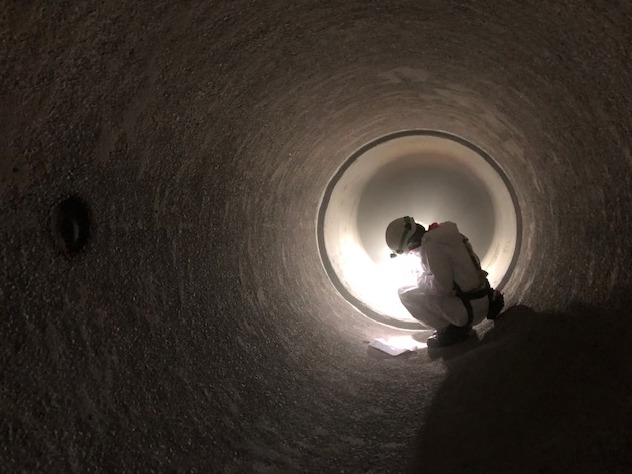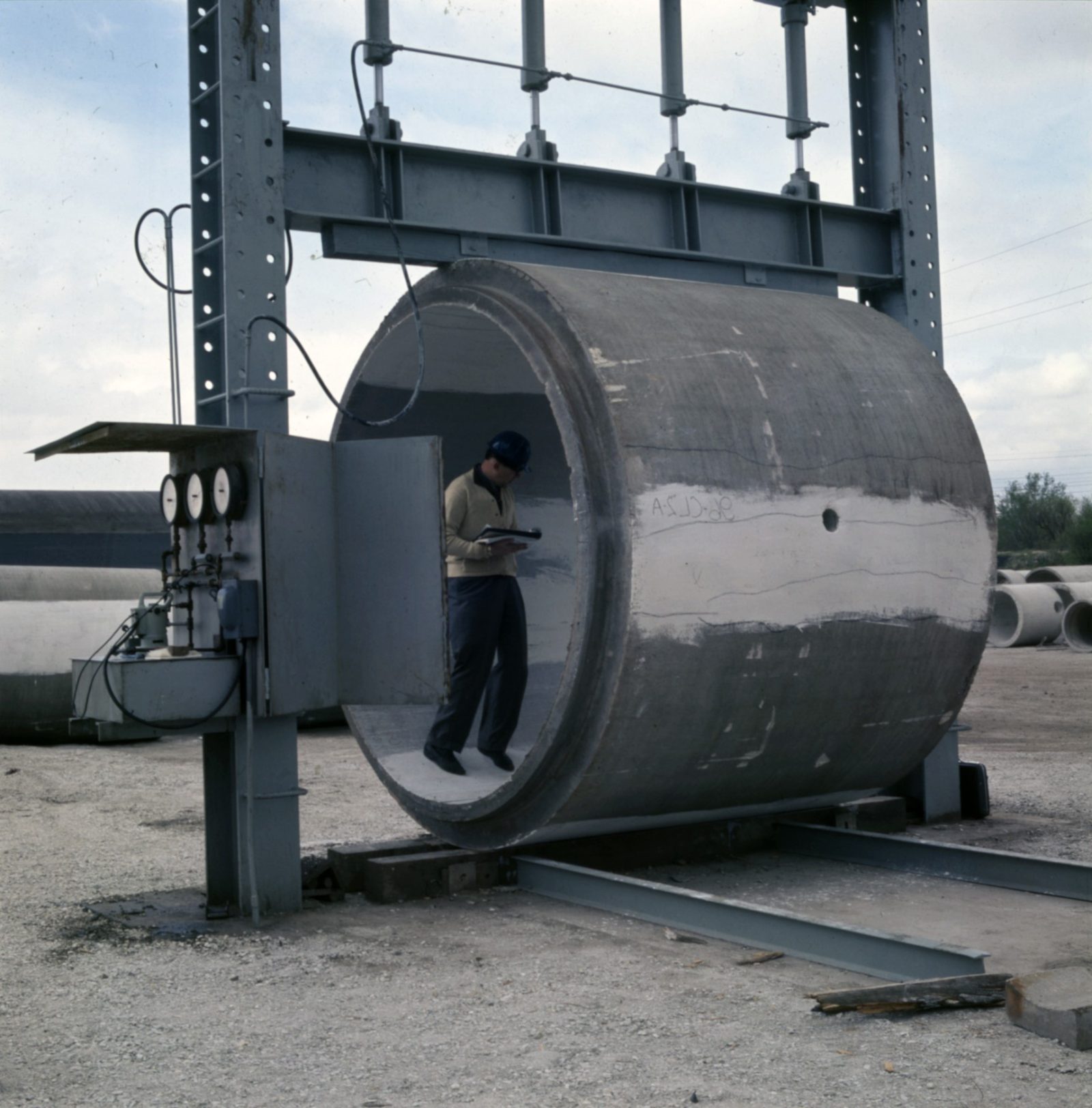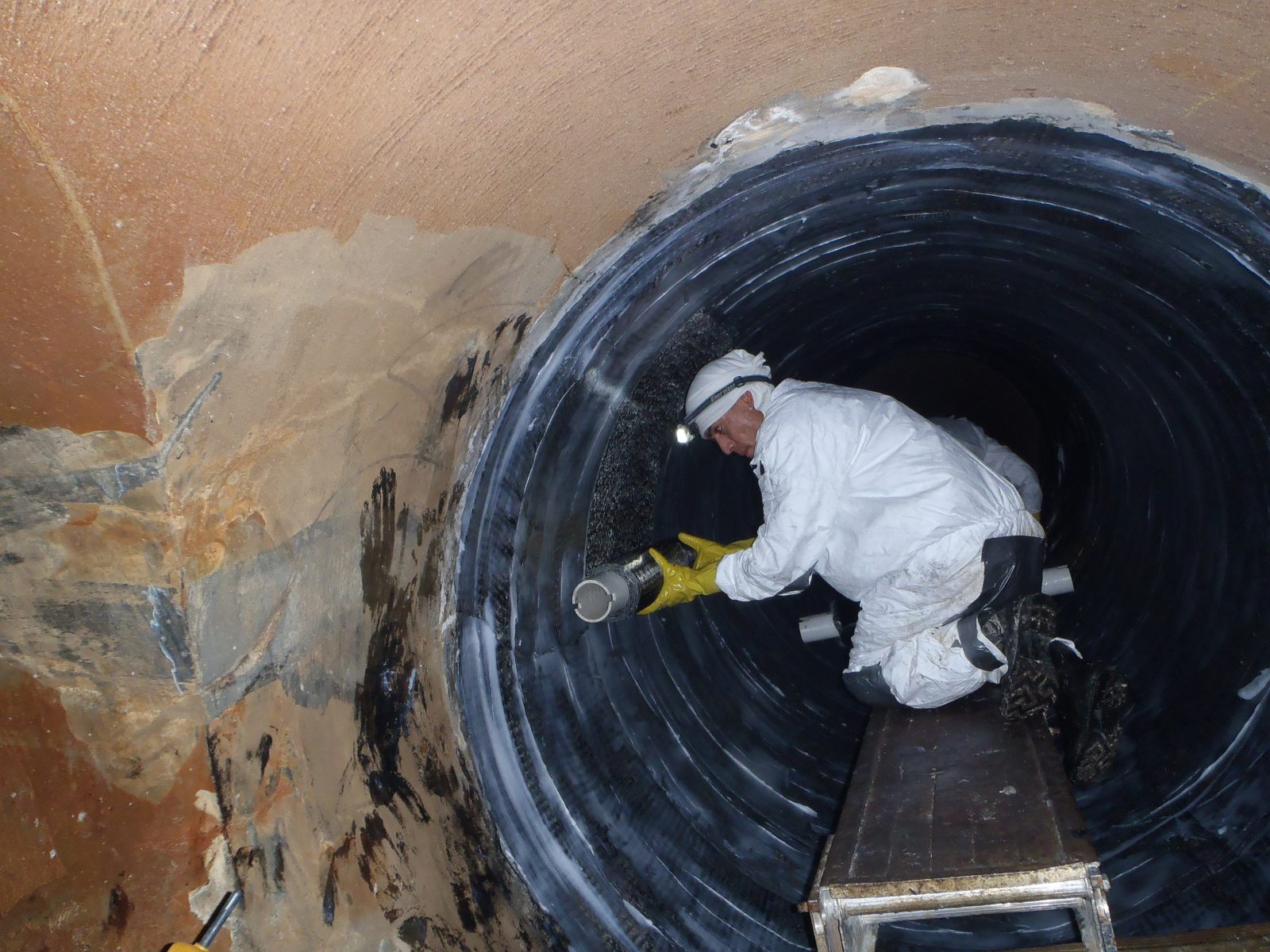The Ins and Outs of Pipeline Assessment and Repair

Monitoring, repairing, and replacing America’s aging pipeline infrastructure is an important topic for system owners and operators, as well as local, state, and federal officials. In its 2017 Report Card for America’s Infrastructure, the American Society for Civil Engineers (ASCE) gave the nation’s drinking water system a D (poor) grade and its wastewater system a D+, calling for more than $1.25 trillion in investments over the next twenty-five years.
Pipeline owners need to balance short-term needs to keep their systems running with longer-term planning efforts. Pipeline assessments and repairs require thoughtful analysis and execution due to the logistical challenges inherent to these types of projects, including taking assets out of service, locating areas of need, and maneuvering within restricted spaces.
In a recent interview, Simpson Gumpertz & Heger (SGH) Senior Principal Rasko Ojdrovic gave an overview of his experience with pipelines and discussed some challenges of this work.
Q. What is your area of practice at SGH?
I specialize in structural engineering, engineering mechanics, and infrastructure engineering, with a focus on pipelines. Many of my projects involve assessing large-diameter prestressed concrete cylinder pipe (PCCP) conveying water and wastewater for a range of clients, including water authorities, power and energy companies, engineering firms, and contractors.
Q. How did SGH get involved in this type of work?
Pipelines have been part of SGH from the beginning. When our founders began partnering together in the 1950s, Frank Heger was working on his Ph.D. dissertation, “A Theory for the Structural Behavior of Reinforced Concrete Pipe,” which led to the first rational design method for this type of pipe. Dr. Heger’s continued research helped to develop standards and design methods for concrete and plastic pipes that are still in use today. Following in Dr. Heger’s footsteps, SGH has continued to make significant contributions to the field of pipeline engineering.
Pipeline work aligns well with SGH’s core business of structural and building enclosure engineering. In essence, we do structural engineering for a structure that happens to be round and buried in the ground. There is also an overlap with the building technology practice, except we keep water inside our structures instead of outside a building enclosure.

Q. How did you get involved in pipelines?
My work with pipelines started my first day at SGH. I joined the firm in 1990 after receiving my Ph.D. from Duke University and conducting research in fracture mechanics as a visiting assistant professor. My first projects here involved checking formulas and developing a computer program for the analysis and design of PCCP and also performing tests for the development of American Water Works Association pipeline design standard AWWA C304 (Standard for Design of Prestressed Concrete Cylinder Pipe). AWWA issued this standard in 1992 and it is still in effect today.
My colleague, Mehdi Zarghamee, led the development effort for C304, which involved creating a limit state design procedure based on rigorous testing and analysis. The result moved the industry from a semi-empirical design method using simple calculations to a procedure accounting for creep, shrinkage, relaxation, and sixteen design limit states.
Since then, I have worked on condition assessments, investigations, and design of most other types of pipe, including concrete, steel, ductile and cast iron, asbestos cement, high-density polyethylene (HDPE), and others.


For every aspect of pipeline work, a problem occurs that we address through research, analysis, testing, and verification.
Q. What is PCCP?
PCCP is a composite pipe structure made up of a concrete core and a thin steel cylinder, compressed using high-tensile-strength prestressed wires and protected with a mortar coating. These pipes carry high internal pressures and external loads and can range in diameters from about two to more than twenty feet. Pipe segments usually come in 20-foot-long pieces strung together by bell-and-spigot joints with rubber gaskets protected from the outside with a cementitious grout diaper.
The industry began using PCCP in the 1940s and continues to use it today. The American Concrete Pressure Pipe Association (ACPPA) reports that 90 of North America’s 100 largest metropolitan areas use PCCP in their water and wastewater systems.
Q. How do you find at-risk pipeline sections before they pose problems?
Pipes age like everything else. With time, there is a need to assess their condition and determine the risk of failure. Pipeline condition assessments are a necessary part of managing these assets. Many assessment programs came after major pipeline failures in the 1970s and 1980s. At that time, inspection methods included internal visual and sounding inspection of a dewatered pipeline, over-the-line corrosion surveys, and external inspection of pipe pieces.
Then, in the late 1990s, a group of engineers from Canada had a breakthrough. They developed an electromagnetic inspection technology that essentially let you pass a small cart with an antenna through the pipeline. The device used electromagnetic signals to determine where broken wires existed. We worked closely with these engineers and used the electromagnetic inspection results to interpret the structural condition of pipelines and determine whether or not pipes with broken wires were structurally adequate.
SGH developed a failure margin analysis method for pipes with broken wires to identify pipes at high risk of failure and prioritize pipes for repair. We related the number of broken wires and the overall condition of the pipe with the maximum pressure the pipe could withstand. Based on the extent of damage to the pipe and the internal pressure, we were able to predict the pipe’s failure risk.
We use analyses like this to help owners manage their assets within a reasonable budget. For example, if they have 100 distressed pipes, repairing all of them would be very costly, but by doing failure risk analysis they could identify a small fraction of pipes that need repair within the next five years while leaving others in the line. We still use failure risk analysis methods as we continue research to improve our understanding of how PCCP and other pipes age and how failures occur.
Q. How do you repair PCCP?
With pipelines, there are two repair options: go outside or inside. SGH has experience with both approaches and we have seen the industry change over time with continued research and improved technology.
Externally, a common approach used to be pipe replacement – essentially inserting new pieces of pipe and welding them in place. We developed PCCP repair procedures using external post-tensioning design based on AWWA C304. This involves high-strength steel tendons tied like a shoelace around a pipe and squeezed to restore the prestress lost by the broken wires. To protect the post-tensioning tendons from a potentially corrosive environment, we use fiber-reinforced shotcrete. These options are both effective – and sometimes post-tensioning can even be used while the pipeline remains in service. However, they require large excavations to uncover the pipe, which can be expensive, time consuming, and in some cases not even possible because of adjacent structures.
The need for an internal pipe repair method arose for pipes that could no longer be excavated. Several contractors started applying carbon fiber-reinforced polymer (CFRP) to add a thin lining inside distressed pipe to carry internal pressure and external loads and provide for water tightness, strength, and stiffness. SGH started designing CFRP repairs in the mid-2000s and recognized the need for analytical and experimental research to identify failure modes and develop the basis for a design procedure.

Q. Can you describe your CFRP repair work?
CFRP repairs are effective but labor-intensive and sensitive to human errors, so quality assurance and quality control (QA/QC) is important. SGH has designed CFRP repairs and worked with contractors and owners to provide QA/QC checks on hundreds of pipes to make sure the fabric is properly prepared, the environment is within certain ranges of temperature and humidity, and there are no voids or damage.
Currently, an AWWA committee led by Dr. Zarghamee is in the process of finishing a new standard (AWWA C305) on CFRP repair design for PCCP. Additionally, I am on the American Society of Mechanical Engineers (ASME) code case team for CFRP repair of steel pipelines.
Q. What's next?
You can see a pattern developing here. For every aspect of pipeline work, a problem occurs that we address through research, analysis, testing, and verification. This all leads to developing a new procedure or design standard that we share with the industry to continually improve our infrastructure in a responsible way.